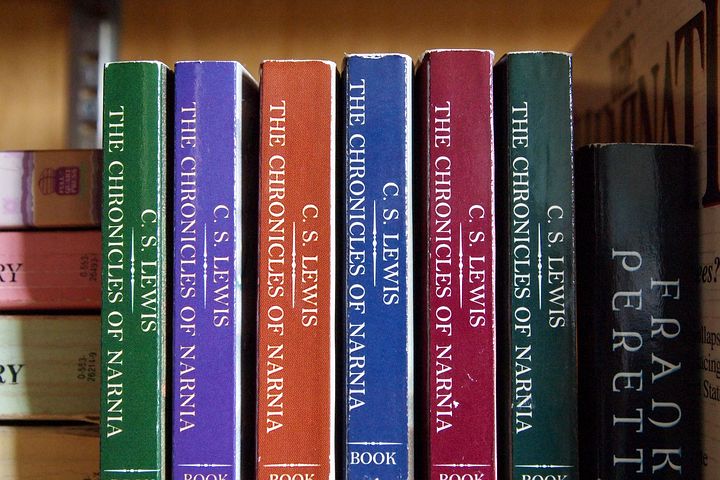 EPISODE SUMMARY:
EPISODE SUMMARY:
In season 3 episode 10 of the Eudo Podcast, Dr. Paul M. Gould discusses insights about story from C.D. Lewis. We know Lewis loved to read stories and we also know he had some interesting things to say about the reading of stories. Listen on to find out more!
EPISODE NOTES:
C.S. Lewis On Stories
The Challenge:
In an essay called “On Stories,” Lewis wrote the following about the reading of books:
“An unliterary man may be defined as one who reads books once only.”
Now, this is challenging. There are so many books out there, so many books that I want to read—it is really hard to think about reading books a second or third time. So—why does Lewis say this? He goes on:
“The re-reader is looking not for actual surprises (which can only come once) but for a certain surprisingness. The point has often been misunderstood… It is the quality of unexpectedness, not the fact that delights us. It is even better then second time. Know that the ‘surprise’ is coming we can now fully relish the fact that this path through the shrubbery doesn’t look as if it were suddenly going to bring us out on the edge of the cliff… Not till the curiosity, the sheer narrative lust, has been given its sop and laid asleep, are we at leisure to savor the real beauties.”
The Invitation:
In the epilogue to his book An Experiment in Criticism, Lewis asks the question: what is the chief value of reading literature? What makes good literature good? His answer, in outline is this: Good literature contains two qualities: logos and poiema. As logos, that is, something said, literature tells a story, or expresses an emotion or exhorts or pleads. As poiema, literature is understood as a work of art, something that moves, something made that reveals beauty, and reveals the divine, and it is pleasurable and satisfying to read. As Lewis describes it:
“The nearest I have yet got to an answer [about the value of literature] is that we seek an enlargement of our being. We want to be more than ourselves.”
He goes on to say:
Good literature “admits us to experiences other than our own… in reading great literature I become a thousand men and yet remain myself. Like the night sky in the Greek poem, I see with a myriad of eyes, but it is eye who see. Here, as in worship, in love, in moral action, and in knowing, I transcend myself; and am never more myself than when I do.”
In other words, we inhabit tiny worlds, and by looking at the world through the eyes of others, we enlarge our own vision of reality; in doing so we grow in love, in knowledge, and in self-awareness of our place in the world. The old paradox is at work here: to find yourself you must lose yourself (as Christ says); to become whole, you must enter into the stories of others for there you find healing and wholeness, escape, recovery, and consolation—and if faithfully followed, you find God too.
C.S. Lewis’ Creation of Narnia
So, how did Lewis go about creating Narnia? How did the story begin? Did he map it out using a story board? Here is how he describes it:
“Everything began with images; a faun carrying an umbrella, a queen on a sledge, a magnificent lion. At first there wasn’t anything Christian about them; that element pushed itself in of its own accord. It was part of the bubbling.”
In other words, Lewis didn’t set out, at least at first, to write a series of Christian allegories. Rather, prime reality bubbled out, or into his secondary world. And of course, that is how stories, or good stories, usually go. This makes sense—because all of us come into the world as part of an ongoing story—and that story—the gospel story is that which moves us, shapes us, and propels us—even if we are unaware—and thus, for those like Lewis, deeply immersed into that story, it can’t help but bubble up. I think this is a good model for those of us who are Christians and artists: we don’t need to set out to do Christian art; rather we set out to make art, and in the making, the truth, goodness, and beauty of Jesus and the gospel story will bubble out.
CONCLUDING REMARKS:
So, how can we join with God in re-enchanting the world? By locating your life in God’s story and living for something greater than yourself. In doing so—you will be a living sign of the goodness, truth, and beauty of the gospel—and God will use you to invite others to join with you in this greatest story ever told.
RESOURCES MENTIONED:
- C. S. Lewis, An Experiment in Criticism
- ______, “Of Other Worlds”
- ______, “On Stories”




